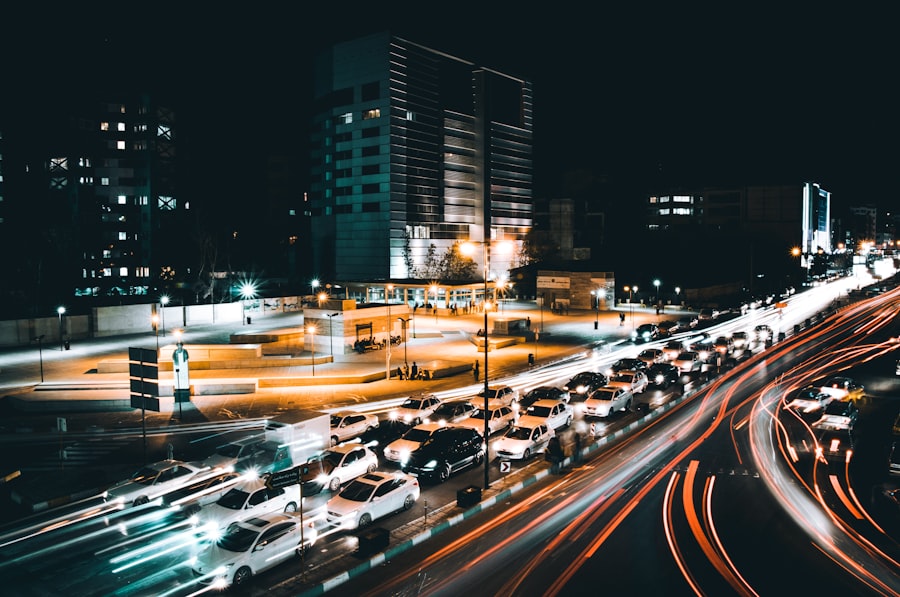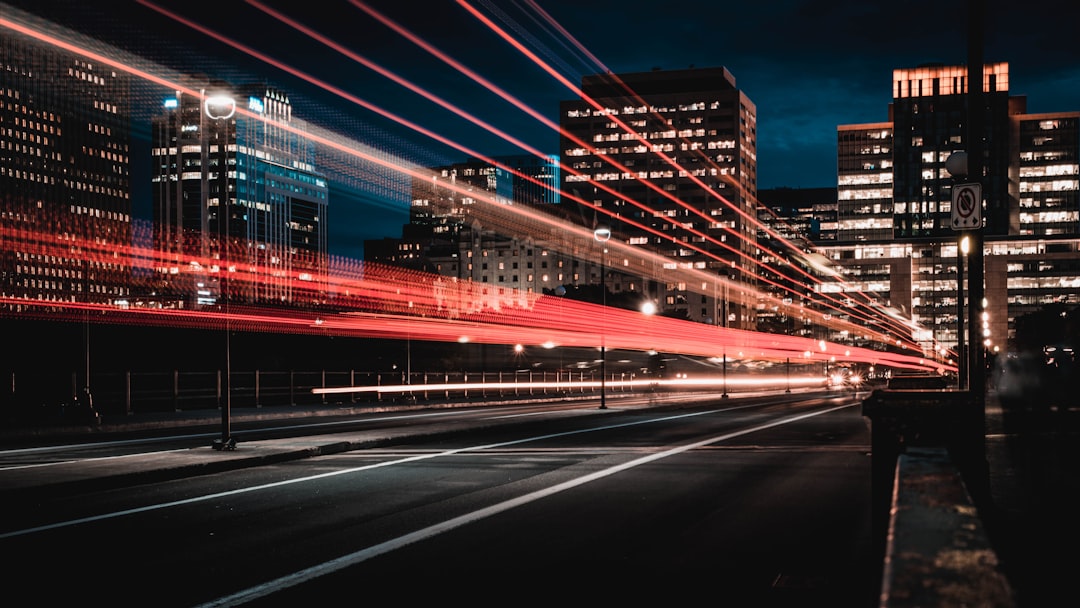Traffic patterns are a complex web of behaviors and movements that can significantly impact daily commutes. Understanding these patterns is essential for anyone who regularly travels on busy roads or highways. Traffic flow is influenced by various factors, including time of day, weather conditions, and local events.
For instance, during rush hour, the volume of vehicles on the road increases dramatically as commuters head to and from work. This surge can lead to congestion, delays, and frustration for drivers. By observing these patterns over time, individuals can better anticipate when to leave home or which routes to take.
Moreover, traffic patterns can vary significantly from one area to another. Urban centers often experience heavier traffic due to a higher concentration of businesses and residents, while suburban areas may have more predictable patterns. Additionally, seasonal changes can affect traffic; for example, summer vacations may lead to increased travel on highways as families embark on road trips.
Understanding these nuances allows drivers to make informed decisions about their travel plans, ultimately leading to a smoother and more efficient journey.
Key Takeaways
- Understanding traffic patterns is essential for planning an efficient commute.
- Utilize traffic apps and websites to stay informed about traffic conditions and plan your route accordingly.
- Consider alternative transportation options such as public transit, biking, or walking to avoid traffic congestion.
- Carpooling and utilizing HOV lanes can help reduce traffic and save time during your commute.
- Timing your commute to avoid peak traffic hours can significantly reduce your travel time.
Planning Your Route
Effective route planning is a crucial step in ensuring a timely arrival at any destination. By taking the time to map out a journey in advance, individuals can identify the most efficient paths and avoid potential pitfalls. This process often involves considering multiple factors, such as distance, estimated travel time, and the likelihood of encountering traffic congestion.
Utilizing tools like GPS devices or online mapping services can provide real-time data that helps in selecting the best route. In addition to traditional roadways, it is also beneficial to explore alternative routes that may not be as well-known but could offer a quicker passage during peak times. These lesser-known paths might be less congested and provide a more pleasant driving experience.
Furthermore, planning should also account for any potential road closures or detours that could arise due to construction or accidents. By being proactive in route planning, drivers can minimize delays and enhance their overall travel experience.
Utilizing Traffic Apps and Websites

In today’s digital age, traffic apps and websites have become indispensable tools for commuters seeking to navigate their journeys more effectively. These platforms provide real-time updates on traffic conditions, allowing users to make informed decisions about their routes. Popular applications like Waze and Google Maps not only offer navigation assistance but also alert users to accidents, road closures, and other obstacles that may impede their progress.
By leveraging these resources, drivers can adjust their routes on the fly, potentially saving valuable time. Additionally, many traffic apps incorporate user-generated data, which means that commuters can contribute information about current conditions. This collaborative approach enhances the accuracy of the information provided and fosters a sense of community among users.
As a result, individuals can rely on these apps not just for navigation but also for insights into the experiences of fellow travelers. By staying connected through technology, drivers can navigate their journeys with greater confidence and efficiency.
Alternative Transportation Options
| Transportation Option | Benefits | Challenges |
|---|---|---|
| Bicycles | Environmentally friendly, good for health | Weather-dependent, limited carrying capacity |
| Public Transit | Cost-effective, reduces traffic congestion | Dependent on schedules, limited coverage |
| Carpooling | Reduces emissions, cost-sharing | Coordination challenges, limited flexibility |
| Walking | Good for health, no emissions | Limited distance, weather-dependent |
As urban areas continue to grow and traffic congestion becomes an increasingly pressing issue, alternative transportation options are gaining popularity among commuters. Public transit systems, such as buses and trains, offer a viable solution for those looking to avoid the stress of driving in heavy traffic. Many cities have invested in expanding their public transportation networks, making it easier for residents to access reliable and efficient travel options.
By utilizing these services, individuals can reduce their carbon footprint while also enjoying a more relaxed commute. Biking and walking are also becoming more common alternatives for short-distance travel. Many cities are implementing bike lanes and pedestrian-friendly infrastructure to encourage these modes of transportation.
Not only do they provide an eco-friendly option, but they also promote physical health and well-being. For those who live close to their workplaces or local amenities, opting for a bike or walking can be a refreshing change from the confines of a car.
Carpooling and HOV Lanes
Carpooling has emerged as an effective strategy for reducing traffic congestion while promoting environmental sustainability. By sharing rides with others who have similar destinations, commuters can significantly decrease the number of vehicles on the road. This not only alleviates traffic but also reduces fuel consumption and lowers emissions.
Many cities have established carpool programs that facilitate connections between individuals looking to share rides, making it easier than ever to participate in this eco-friendly practice. High-Occupancy Vehicle (HOV) lanes are another incentive for carpooling. These designated lanes allow vehicles with multiple passengers to bypass regular traffic lanes during peak hours, providing a faster route for those who choose to share rides.
The existence of HOV lanes encourages more people to consider carpooling as a viable option for their daily commutes. As awareness of the benefits of carpooling continues to grow, it is likely that more individuals will embrace this practice as part of their travel routines.
Timing Your Commute

Timing plays a critical role in determining the efficiency of any commute. By strategically planning departure times, individuals can avoid the worst of rush hour traffic and enjoy a smoother journey. For many commuters, this means leaving earlier in the morning or later in the evening when traffic volumes are lower.
Adjusting one’s schedule by even 15 minutes can make a significant difference in travel time and overall stress levels. In addition to adjusting departure times, it is also important to consider the timing of specific routes throughout the week. Traffic patterns can vary not only by time of day but also by day of the week; for example, Fridays often see heavier traffic as people prepare for the weekend.
By being mindful of these variations, commuters can optimize their travel plans and reduce the likelihood of encountering delays.
Understanding Peak Traffic Hours
Peak traffic hours are periods when roadways experience the highest volume of vehicles, typically coinciding with morning and evening commutes. Understanding these peak times is essential for anyone looking to navigate busy roads effectively. In many urban areas, peak hours can extend beyond traditional rush hour periods due to factors such as school schedules or local events that draw large crowds.
By familiarizing themselves with peak traffic hours in their specific regions, commuters can make informed decisions about when to travel. For instance, those who have flexible work hours may choose to adjust their schedules to avoid peak times altogether. This proactive approach not only saves time but also contributes to a more pleasant driving experience by reducing exposure to congestion.
Preparing for Construction and Inclement Weather
Construction projects and inclement weather conditions can significantly disrupt traffic flow and lead to unexpected delays. Being prepared for these challenges is crucial for any commuter looking to maintain a smooth journey. Regularly checking local news sources or traffic apps for updates on construction projects can help individuals plan their routes accordingly and avoid areas that are likely to be affected by roadwork.
Inclement weather poses its own set of challenges for drivers. Rain, snow, or fog can reduce visibility and make road conditions hazardous.
Adjusting speed and maintaining safe following distances are critical practices during adverse weather conditions. By being aware of potential disruptions and preparing accordingly, drivers can navigate their journeys with greater confidence.
Utilizing E-ZPass and Cash Lanes
Toll roads are often a necessary part of many commutes, but they can also be a source of frustration due to long lines at toll booths. Utilizing electronic toll collection systems like E-ZPass can streamline this process significantly. With E-ZPass, drivers can pass through toll plazas without stopping to pay cash, reducing wait times and improving overall traffic flow.
This convenience not only saves time but also enhances the driving experience by minimizing interruptions during travel. For those who prefer cash payments or do not have access to electronic toll systems, it is important to be aware of cash lanes at toll plazas. While these lanes may be slower due to manual transactions, understanding how they operate can help drivers plan accordingly.
Being prepared with exact change or knowing which lanes accept cash can alleviate some of the stress associated with toll payments.
Navigating the Toll Plaza
Navigating toll plazas efficiently requires awareness and preparation on the part of drivers. As vehicles approach a toll plaza, it is essential for drivers to pay attention to signage indicating which lanes are designated for cash payments versus electronic toll collection systems like E-ZPass. Choosing the correct lane based on one’s payment method can prevent unnecessary delays and ensure a smoother transition through the plaza.
Drivers should be prepared to stop if necessary but should also be mindful of maintaining a steady pace when passing through electronic toll lanes. Familiarity with the layout of toll plazas can further enhance navigation skills; knowing where each lane leads allows drivers to make informed decisions as they approach.
Staying Informed with Traffic Updates
Staying informed about current traffic conditions is vital for any commuter looking to optimize their travel experience. Regularly checking traffic updates through apps or local news sources can provide valuable insights into accidents, road closures, or other incidents that may impact travel plans. Many traffic apps offer push notifications that alert users in real-time about significant changes in conditions along their routes.
In addition to relying on technology for updates, it is also beneficial for commuters to develop a habit of listening to local radio stations that provide traffic reports during peak travel times. These reports often include information about ongoing construction projects or unexpected delays that may not yet be reflected in navigation apps. By staying informed through multiple channels, drivers can make timely adjustments to their routes and arrive at their destinations with minimal disruption.
In conclusion, navigating daily commutes requires a multifaceted approach that encompasses understanding traffic patterns, planning routes effectively, utilizing technology, exploring alternative transportation options, and staying informed about current conditions. By adopting these strategies, individuals can enhance their commuting experiences while contributing to reduced congestion on roadways.
The George Washington Bridge, a critical artery connecting New York and New Jersey, has long been a focal point for discussions on traffic congestion and infrastructure challenges. An interesting article that delves into the complexities of traffic patterns and the impact on local communities can be found on MyGeoQuest. This piece provides insights into the historical significance of the bridge and explores potential solutions to alleviate the notorious traffic jams. For more detailed information, you can read the full article by visiting this link.
WATCH THIS! The Real Cost of NYC Living: Your Wallet, Sanity, and Subway Survival Skills
FAQs
What is the George Washington Bridge?
The George Washington Bridge is a double-decked suspension bridge that spans the Hudson River, connecting the Washington Heights neighborhood of Manhattan in New York City with the borough of Fort Lee in New Jersey.
What is the George Washington Bridge traffic?
George Washington Bridge traffic refers to the congestion and flow of vehicles on the bridge, which is one of the busiest bridges in the United States.
What causes traffic on the George Washington Bridge?
Traffic on the George Washington Bridge can be caused by a variety of factors, including accidents, construction, lane closures, and high volumes of vehicles during peak travel times.
How does the George Washington Bridge traffic impact commuters?
The traffic on the George Washington Bridge can lead to significant delays for commuters traveling between New York and New Jersey, impacting travel times and potentially causing frustration for drivers.
What measures are in place to manage traffic on the George Washington Bridge?
The Port Authority of New York and New Jersey, which operates the George Washington Bridge, implements various traffic management strategies, such as real-time traffic monitoring, lane control, and communication with local law enforcement to help alleviate congestion and improve traffic flow.
